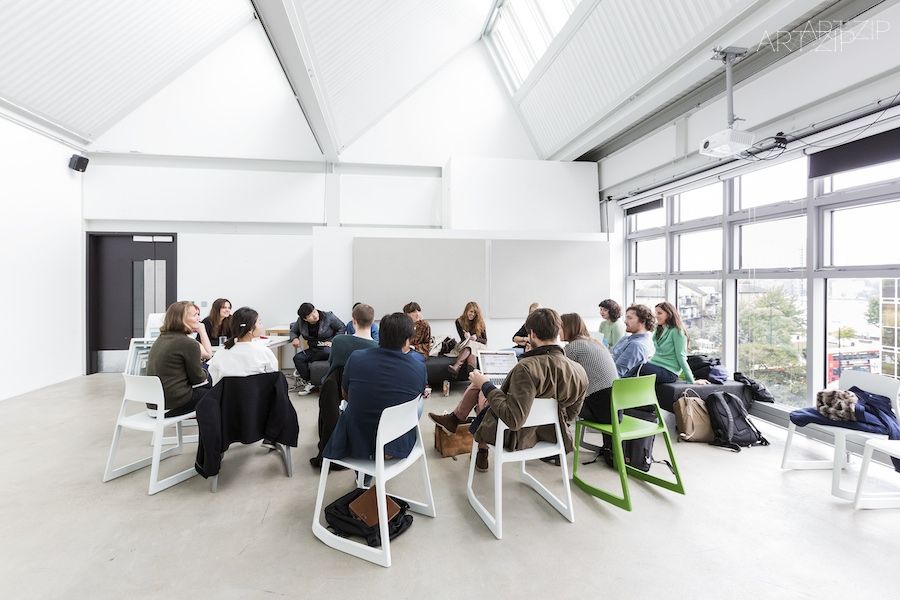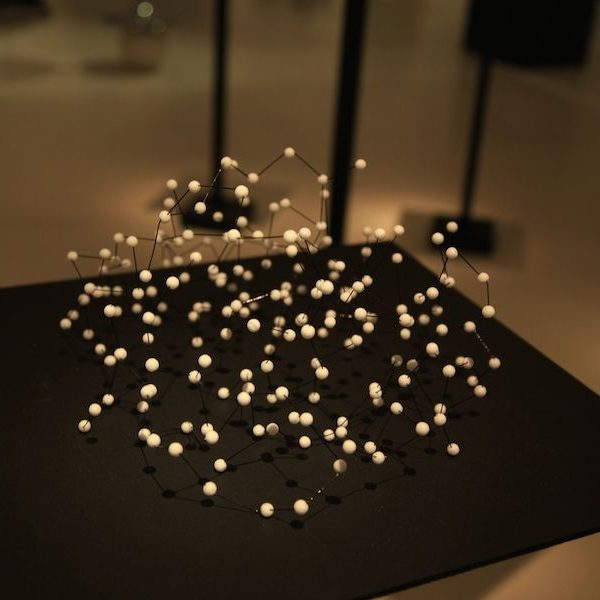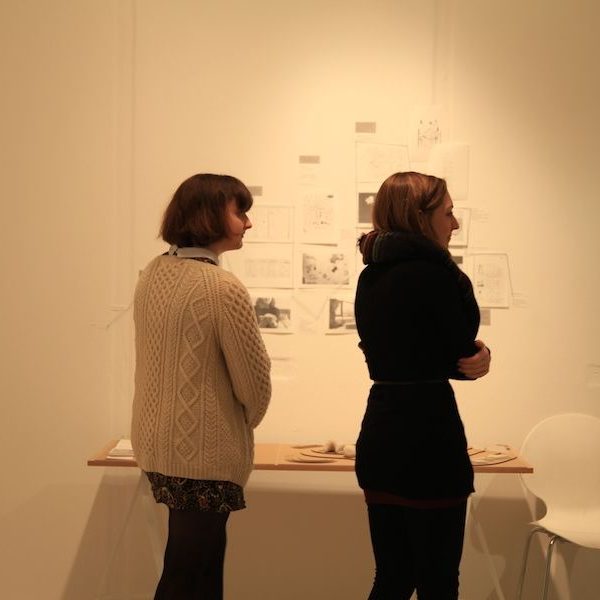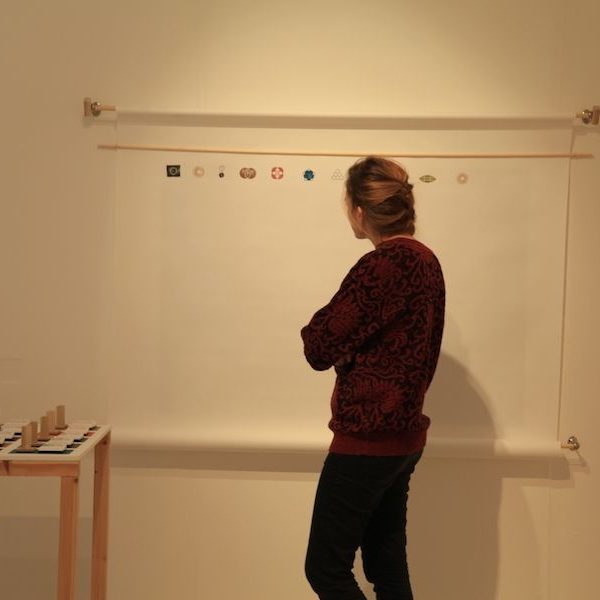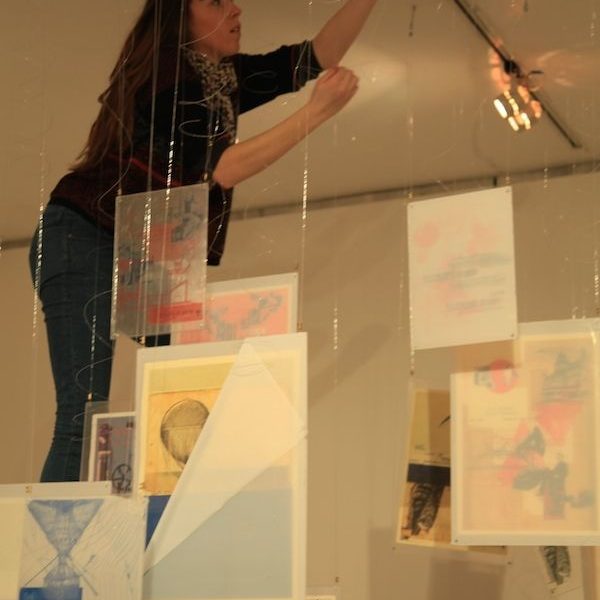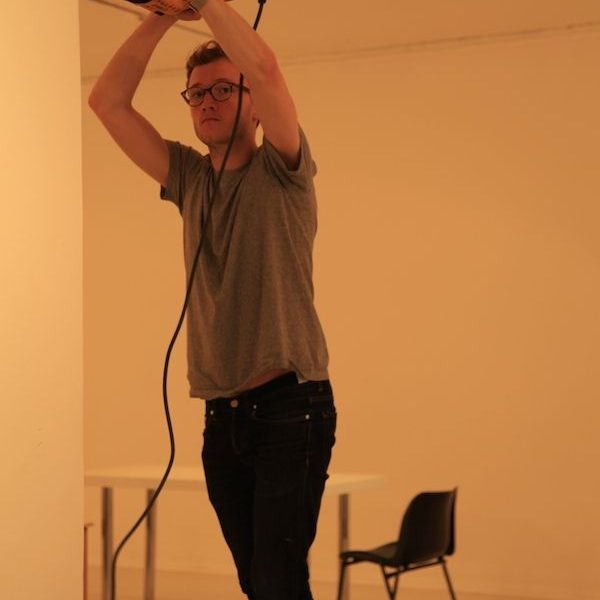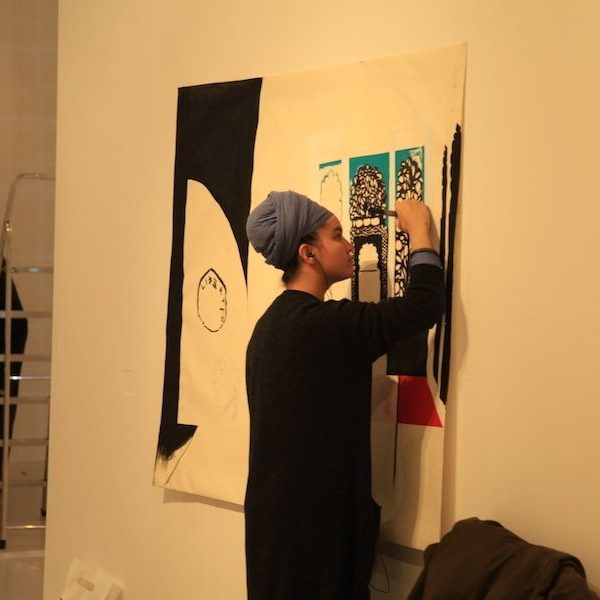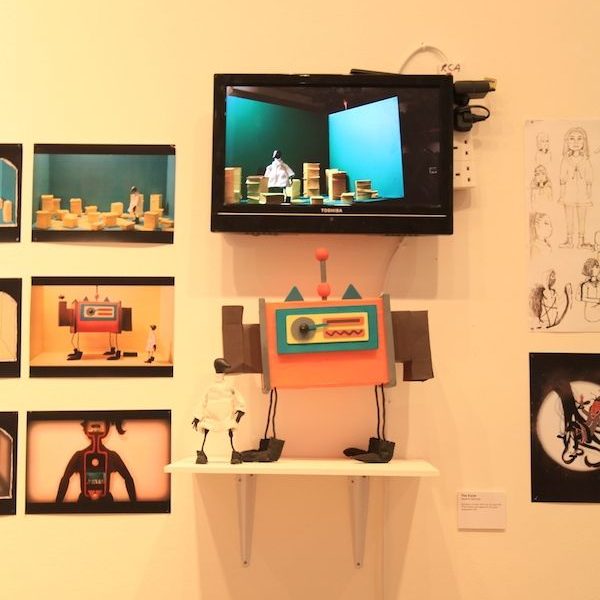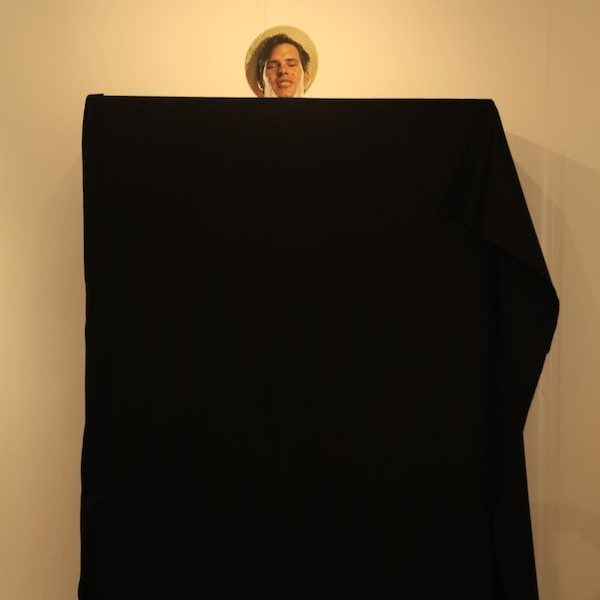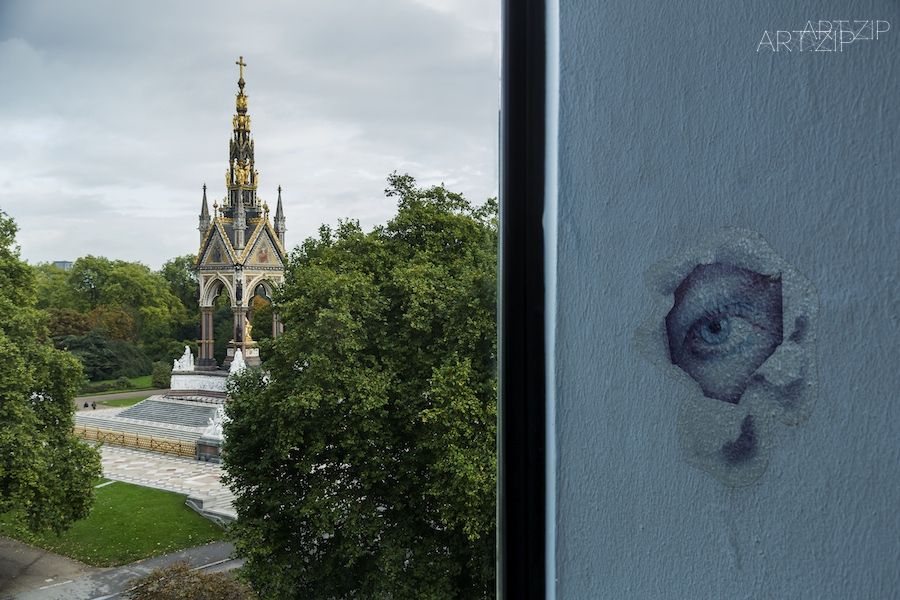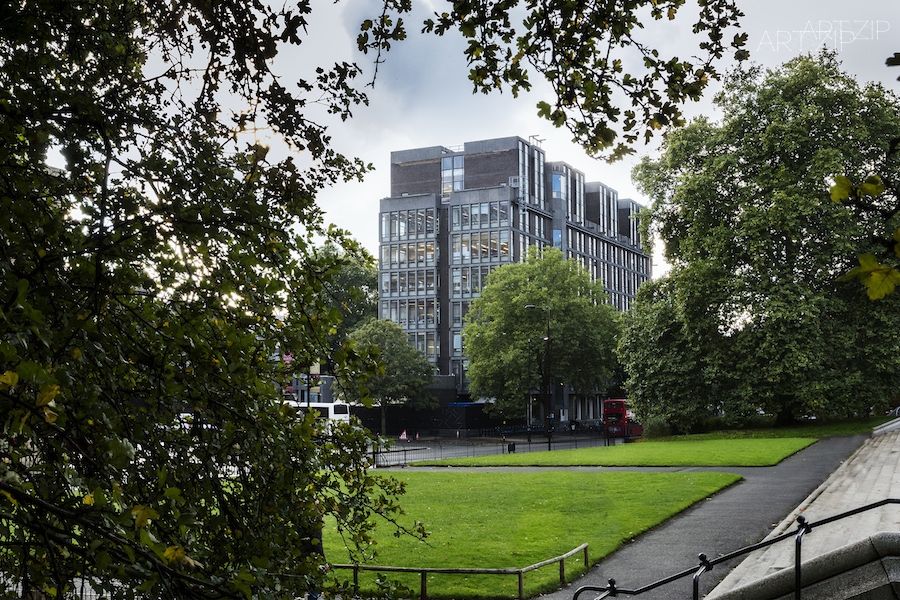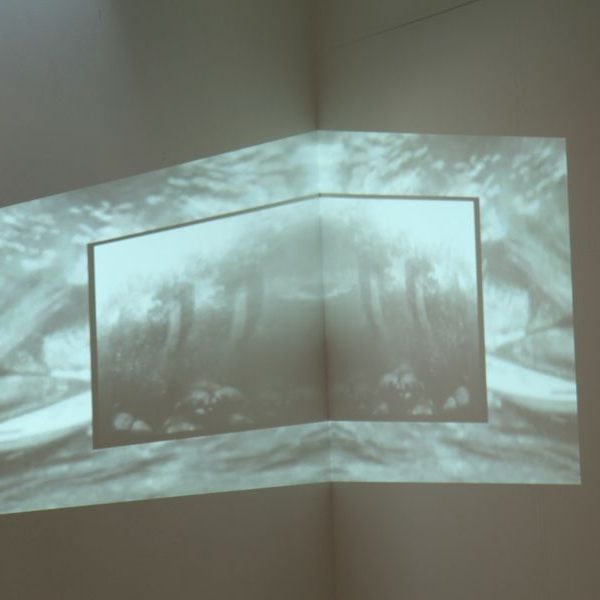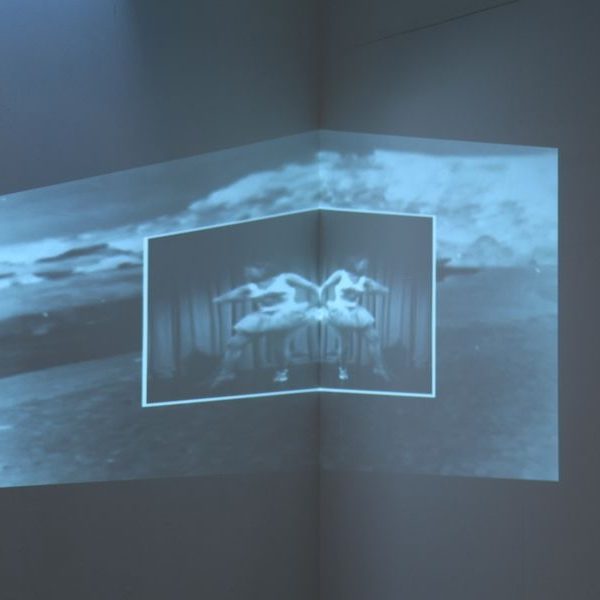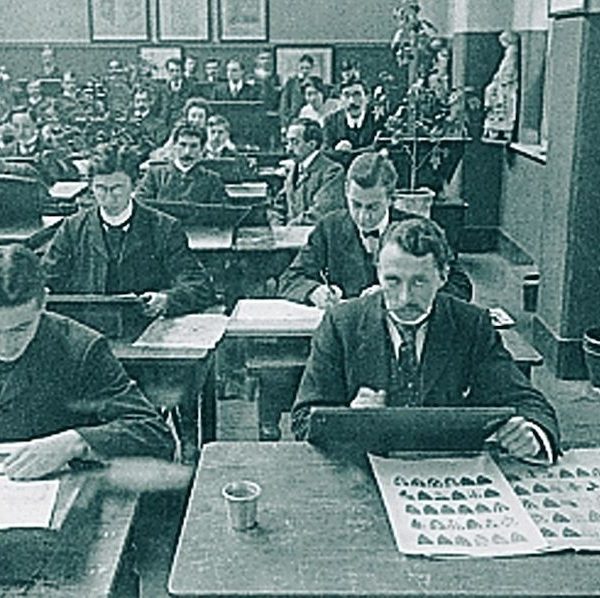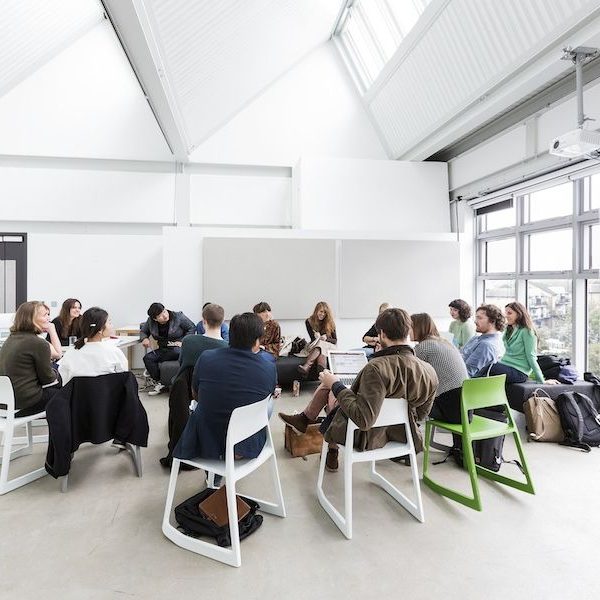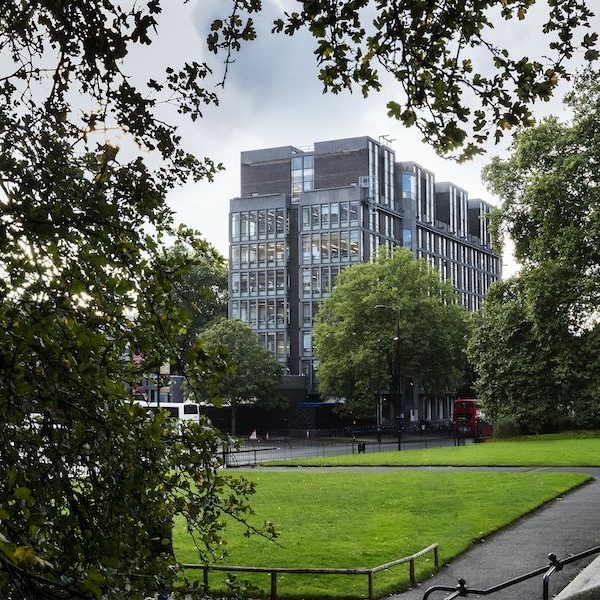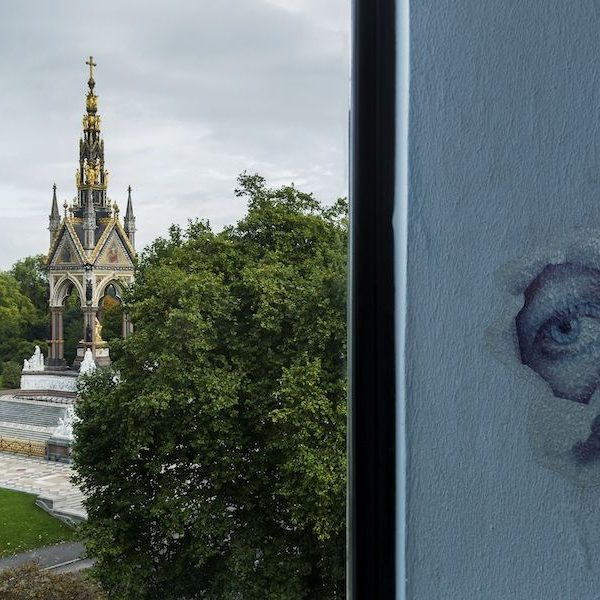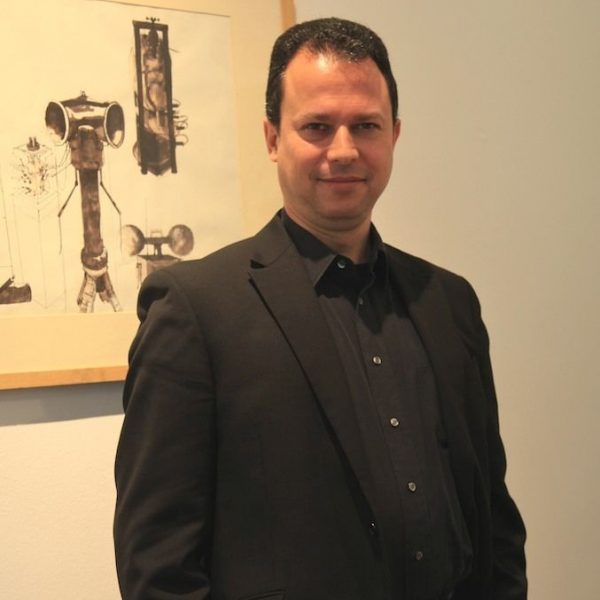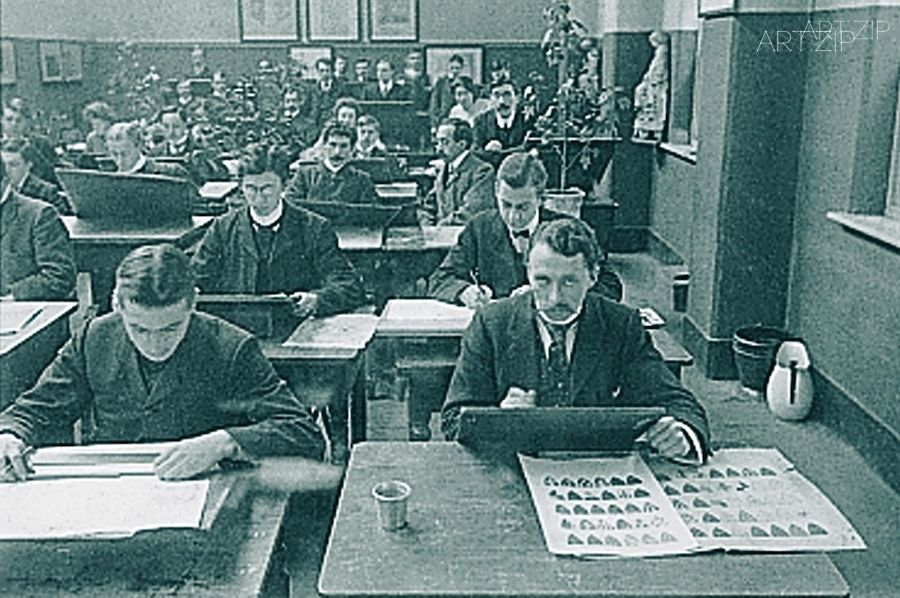
Interview with Professor Naren Barfield, Pro-Rector (Academic) at the Royal College of Art
專訪英國皇家藝術學院學術院長納仁·巴菲爾德教授
.
Naren Barfield is an artist. He has held senior academic positions for several years including leading research in two specialist art and design institutions. He is currently Pro-Rector (Academic) at the Royal College of Art, where he leads the academic direction of the College, particularly quality and standards in teaching and learning.
納仁·巴菲爾德是一位藝術家,同時也曾于兩所專業藝術和設計學院任職學術主任。現在,他就職于英國皇家藝術學院,負責學院的學術研究工作,他的主要工作是引領學院在教師教學和學生學習質量和水平方面的研究。
.
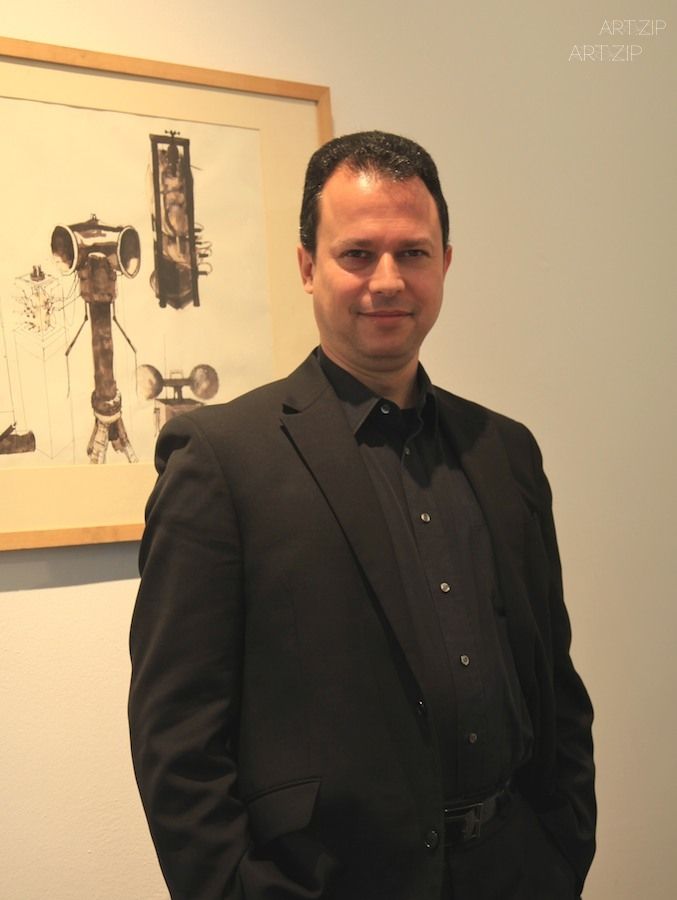
Professor Naren Barfield (RCA)
ART.ZIP: Would you give us a brief introduction of yourself?
NB: In my academic career, I taught in the RCA in the 1990s, Slade School of Fine Art, University of the Arts, and other art and design schools. I was Director of Research at Wimbledon School of Art, and then I was Head of Research and Postgraduate Studies at Glasgow School of Art for seven years. I came back to the RCA three years ago. Immersed in art and design, I maintain responsibility for academic research, most of the College’s academics, all of the taught Master’s programmes of the College’s six academic Schools, the research department and technical services, IT, workshops and libraries. I look after everything academic and research-focused. I also continue to work as a site-specific artist. I work a lot in China actually, with three large exhibitions in China last year, two in Beijing and one in Shenyang.
ART.ZIP: 可不可以請您給我們的讀者做一個簡略的自我介紹?
NB: 在我的學術生涯中,90年代的時候我曾經任教于皇家藝術學院、斯萊德藝術學院(Slade School of Fine Art)、倫敦藝術大學(University of the Arts London)以及其他一些藝術和設計學院,後來我擔任過溫布爾頓藝術學校(Wimbledon School of Art)的研究部主任,後來又在格拉斯哥藝術大學(Glasgow School of Art)工作了七年,負責那裡的研究生課程的學術研究工作。直到3年前,我又回到了皇家藝術學院任職。在這個藝術和設計的最高學府,我主要負責學術研究,包括每個學院的研究生課程、研究部門、技術服務、工作室和圖書館等等內容。我要兼顧這裡所有和學術研究相關的項目。此外,作為一名藝術家,我自己的創作也沒有間斷過。實際上我在中國也做過很多作品,去年我在中國舉辦了三次大型展覽,兩個在北京,一個在上海。
.
ART.ZIP: How would you describe RCA’s teaching concepts?
NB: The RCA is skills based. We stress three things:
The first and most important thing is independent creative thinking. We create students who are going to change the world. That’s why we exist. We are small, only a tiny, tiny dot on the globe, but the influence we have is huge. And the only way you can have that influence is by having graduates who are going to change the world, because they are independent, they think for themselves, they are creative and they are networked. I think that’s the most important thing.
Secondly, they have a strong skills base. At the RCA, there is a two-year minimum postgraduate experience. A research degree is three to four years, and for research associates four further years. Our students have a very involved and in-depth experience. By the time they leave us, they have spent seven, eight, or nine years in art and design education. It is a long time. They will leave with an incredible skills base. But we don’t go from skills to concepts, we develop concepts in harmony with skills. And it’s not simply a demonstration of skills, it’s about graduates having the skills they need to realise the concepts they are working on.
Finally, students work in teams. One student might have great skills in 3D modelling, another student might have amazing skills in public space and planning, and another one might have critical thinking skills in theory and history. When we put these people together in teams, or they find their own teams, they create distinctive combinations.
ART.ZIP: 請您為我們介紹一下皇家藝術學院的教學理念?
NB: 皇家藝術學院是非常注重技術的。我們主要強調三個方面:
第一方面,也是最重要的一部份,學生必須擁有獨立的創造性思維。皇家藝術學院的辦學宗旨是要培養在未來能夠改變世界的學生。我們的學院非常小,但是我們的影響力卻是巨大的。如果要在如此小的一個地方取得巨大的成就,我們必須培養出在各個領域都能做出翻天覆地事蹟的畢業生,也正因如此,我們要求所有的學生必須獨立,必須思考,必須有創造力,同時他們必須知道如何搭建自己的人脈網絡。我覺得這些都是至關重要的。
第二方面,我們非常強調技能的培養。在這裡,研究生課程最少需要2年,研究項目學位需要3到4年,研究員項目則要再多4年。我們的學生會在學習的過程中與整個體系發生非常緊密的互動,在他們離開學校的時候,他們往往已經在這里經歷了相當長時間的藝術教育。當他們畢業的時候,他們已經擁有了非常卓越的專業技能。對於這些技能的學習不是停留在理論和概念階段,我們將理念和技能相結合,在實踐中發展他們的技能。而且我們的教學並不是單純的對技術的示範或表演,我們的目的是為了讓學生們可以學到相應的能力來實現他們自己創作中的想法。
最後一方面,學生們必須學會團隊合作。一個學生可能對做三維模型很在行,同時另一個學生可能對空間的規劃很有一套,還有的學生也許很擅長理論知識和批評,當我們把這些有不同專長的學生分配到一個團隊,或者他們自發的形成團隊,他們的團隊協作會創造出非常獨特的作品。
ART.ZIP: Would you explain more about how students work together?
NB: Students work together in all sorts of different ways. We don’t say people studying sculpture have to be sculptors. We have brain surgeons studying sculpture, we have computer programmers studying design, so we have all sorts of people from different backgrounds. That each of our students has their own interests is imperative. Students find their own groups, since the College is small enough and allows social spaces to stimulate opportunities for collaboration. In Vehicle Design, you could get to know a student in Textiles, which could result in a wonderful collaboration to do with the interior of transport, with how you use textiles in a design environment in vehicles, for example. Our Across RCA programme allows students to study for a short period of time on another course; Graphic Design or Illustration students could spend a week in architecture, for example; Architecture students could take Fine Art classes or get involved with Critical Writing. We find this encourages collaboration and enables students to build their own networks. It also expands students’ viewpoints. Critical Writing students will find practice-based students they want to write about, or practice-based students might want to work with theorists to expand their own critical frameworks. This is networking, there are always opportunities for students to show their work, which is a great opportunity to see what they are doing or making. We place great emphasis on making. A problem of current art and design education is that the cost of studio space has risen dramatically; while studio space has become more expensive, we remain committed to doing, making, showing and discussing, so we have invested heavily in workshops and technical facilities.
We’re also proud of our external programmes, which enable students to have the experience of working in a professional setting with a number of different companies, from car manufacturing to fashion design. Students work internally and externally, professionally, socially and creatively. We recently sent twelve students from different programmes to work with Fiat’s designers at their headquarters in Italy. There are multiple opportunities for collaboration, from fashion to ceramics and glass, to jewellery and metalwork or textiles. Students recognise that these are great opportunities and competition is fierce. Within two years at the Royal College of Art, you are likely to work with a number of international companies. Students know this and it’s one of the reasons they want to come here.
ART.ZIP: 您能不能為我們多介紹一些關於學生們團隊協作的情況?
NB: 這裡的學生團隊協作有各種各樣的形式。我們不認為一個學雕塑的學生就應該成為一個雕塑家。我們這裡有腦外科醫生在學習雕塑的課程;有電腦程序員在學習設計課程,我們這裡的學生來自各種不同的背景。每個學生都有其各自的興趣點是非常必要的,他們自己會形成團體,因為我們學院地方不大,所以比較緊湊的社交空間也激發了學生們相互認識和合作的可能性。舉個例子,汽車設計專業的學生和可能會認識面料設計的學生,他們的合作很有可能會創造出非常棒的運輸方面或者室內設計方面的作品,例如汽車內飾之類的。我們也設有專門的項目來讓學生可以在學院內其他專業進行短期的學習,比如平面設計或者插畫專業的學生可以在建築專業學習一週;建築專業的也可以去純藝術專業或者批評寫作專業去上課。我們發現這種做法可以鼓勵學生們相互合作,也有利於他們建立自己的人際網絡,同時也有益於他們打開自己的視野。批評寫作專業的同學可以找到實踐其寫作的對象,同時以實踐為主的同學也可以通過與他們合作來完善和拓展自己的理論框架,這就是我所說的人際網絡。學院經常提供展示作品的機會,展覽上就可以看到學生們所創作的作品。我們非常強調實際的“操作”。現在的藝術和設計教育的一個巨大問題就是工作車間的花費飆升,雖然工作室和車間的花費變得越來越昂貴,但我們依然是致力於操作、展示以及討論的教育方向,因此,我們在車間和技術設備上投入了大量的資金。
我們也對我們的校外項目感到驕傲,這些校外項目讓我們的學生可以和很多各種類型的公司合作,從汽車製造到時裝設計行業不一而足,通過這種合作學生們會獲得很多專業領域的實戰經驗。皇家藝術學院的學生的實踐在學院內和學院外同等重要,他們的作品集專業性、社會性和創造性為一身。最近,我們派送了12名不同專業的學生到意大利菲亞特公司(Fiat)總部實習。在這裡我們提供各種各樣的合作可能性,時裝、陶瓷、玻璃、珠寶、金屬加工、紡織品等等。學生們都認識到在這裡有很多很好的機會,但同時競爭也是非常激烈的。在皇家藝術學院學習的兩年中,學生很可能會與很多國際公司或企業進行合作,這也是為什麼很多學生願意來這裡學習的一個原因。
ART.ZIP: RCA is often described as ‘design in an art environment, and art in a design environment’. How do you deliver this in daily teaching?
NB: Our course makeup is about 70 per cent design-based and 30 per cent fine art and humanities. Because we place such an emphasis on cross-disciplinary collaboration, our design students mix with our fine art students, reminding our design students that they are enrolled in a school with a long tradition of fine art practice. Dissertations are required at the end of our programmes, so all students have some involvement with the School of Humanities. Our fine art students know that they are working in a school which is design-focused; we have links with Imperial College London, which excels in engineering. We have an Architecture programme, which is unusual in an art school; architecture is often taught in a more traditional university environment. We have architecture, fine art, design, textiles, fashion, all of these coming together and allowing students to study in a really vibrant community, so you have collaboration happening in community ways too.
I think CHS, Critical & Historical Studies, which is part of our humanities programme, is very important to emphasise. This unit reminds students that art and design is not only about creating something, it’s also about considering the situation in which you work. At the doctoral level, many students now are doing increasingly interdisciplinary work across the schools, so fine art with humanities, or fine art with architecture, design with architecture, so that students are gaining some expertise in thinking creatively and developing their ideas across disciplines.
Students don’t only have access to internal specialists. If we haven’t got an in-house expert in a certain discipline, we are able to connect students with experts from other institutions. For example, we work very closely with Imperial College, so if we have students working on something employing science and technology, we’re able to get them the help they need. Again, it’s all about connections.
ART.ZIP: 皇家藝術學院經常被大家描述成“在藝術的環境中做設計,在設計的環境中做藝術”,您可不可以為我們介紹一下在日常教學中是如何體現這樣的理念的呢?
NB: 皇家藝術學院的課程中70%是與設計相關的,30%是與純藝術或人文學科相關的。因為我們非常強調跨學科的合作,我們的藝術類學生和設計類學生都是混在一起的,這也時刻提醒在此就讀的設計學生們,他們是在一個擁有悠久美術實踐傳統的學校就學的。另一方面,課程結束時候學生要提交他們的畢業論文,這樣一來,所有的學生都會與人文學院產生互動,我們的純藝術類學生都很清楚這裡是一個側重於設計的學校;我們與帝國理工學院(Imperial College)有緊密的聯繫,他們擅長工程技術。我們還設有建築學課程,這在一般藝術學校是很少見的,通常建築學專業都是設立在傳統的綜合性大學之中。所以說,我們有建築、美術、設計、紡織、時裝各種專業,而且我們鼓勵學生在各種不同的團體中學習,從而可以和不同的人進行合作。
我還要強調在我們人文學科項目中的批評和歷史研究(CHS,Critical & Historical Studies)也是非常重要的,這部分的內容讓在此學習的學生們認識到藝術和設計並不僅僅是為了創造一些東西,而且也是為了考量你的創作在上下文語境中的位置。在博士研究生階段,現在越來越多的學生在嘗試采用跨學科的研究方向,比如美術和人文學,或者美術和建築,設計與建築,通過這些跨界的合作和開創性的思考方式,學生們獲得了大量的專業知識。
而且學生們不必限於僅在學校內部進行跨學科的實踐,如果我們學校內沒有學生需要的專業人士,我們會從別的研究機構邀請那些學生需要的專家來授課。比如,我們與帝國理工學院的合作非常緊密,所以如果我們的學生在工作中遇到科技類的問題,我們就請帝國理工學院的專家來幫助他們解決難題。所以說,所有這些都是基於各種學科和部門之間的銜接。
ART.ZIP: Is it the reason you have only postgraduate courses?
NB: We have been running only postgraduate programmes for 50 years. A, because it is going to change the world. B, because practice and thinking are more mature at the postgraduate level. C, because the programmes are the best, so we are able to choose the best students.
ART.ZIP: 皇家藝術學院是一個只有研究生課程而沒有本科課程的學院,這是為什麼呢?
NB: 半個世紀以來,我們都是只設立研究生以上學歷的課程,第一是因為我們要培養能夠改變世界的人才,第二是因為研究生課程的學生在思考和實踐兩方面都更為成熟,第三是因為我們的課程是最好的,我們要挑選最好的學生來這裡學習。
ART.ZIP: Since you’ve been to China many times, how do you see the difference between these two education models?
NB: I think the academy tradition in China is still very strong, as you can see that incredible skill base, which is quite different to the European models; in the European model, there is a foundation year in which students learn a little bit of everything… The Chinese model traditionally produces students with strong technical skills, particularly in drawing and crafting. Changes in China mean that Chinese institutions are now moving towards a more balanced programme of individual ideas and creative concepts.
Apart from skills, I think there’s also quite a difference in learning styles and learning methodologies. To simplify things way too much, the Chinese model of higher education sees the professor as being the expert, very knowledgeable in his field, and students are expected to learn from the professor. I think at least for the last 70 years in the UK, the model has been based on student discovery, learning by doing, learning by experiment; this is a guided process. The commonality is the professor, who is expected to engage in practice and research. Academic staff in both places are practitioners and research-active; I think the difference is in the learning models.
ART.ZIP: 您曾經也去過中國很多次,請問您覺得中英兩國在教育模式上有什麼異同?
NB: 我覺中國教育體系中對於學術傳統非常地重視,你可以看到他們非常重視對技術的追求,在這一點上與歐洲的模式非常不同;在歐洲,學生會在正式進入大學前的基礎課程階段學習和接觸各種技術,但都是淺嘗輒止。中國的教育模式培養出來的學生往往都擁有非常出色的技藝,特別是繪畫和手工技術。不過現在也可以看到中國藝術教育的變化,在中國很多的藝術研究院開始更多地關注和平衡個人觀念和創造性思維的項目。
除了技術方面的差異,我覺得在學習方式和方法上中國和歐洲也存在很大的不同。簡單來說,中國高等教育體系中的教授是作為一位專家和權威的角色出現,學生希望從他這裡學到知識;而在英國,至少近70年來,高等教育都是建立在學生自主鑽研,通過實踐和實驗來學習,老師只是作為一個指導性的角色。共同點是中英兩地的教授都是兼顧研究和個人實踐的。所以我覺得最主要的不同點應該是中英學習模式上的不同。
.
ART.ZIP: Some art colleges have set up overseas offices for recruiting students. Why don’t you have one?
NB: We haven’t done that, because we are not traditionally a recruiting institution. The RCA is very selective institution. We can get up to thirteen or fourteen applicants, sometimes as many as eighteen applicants for every single place. We don’t have to be in the business of setting up shop somewhere to recruit students. A large number of our students do come from China, but we are more interested in students who seek us out rather than recruiting heavily. We are carefully developing some deeply held strategic relationships with other institutions. We have chosen to work with high quality partners, so we have a link with Qinghua, CAFA and others.
ART.ZIP: 有一些英國的藝術學院開設了在海外的辦公室來幫助招生,皇家藝術學院為什麼沒有這麼做呢?
NB: 我們確實沒有設立這樣的辦公室,因為傳統上我們並不是一個大規模招生的學院。我們選擇學生的標準非常高,而且競爭非常激烈,每個招生名額背後都有十多位競爭者。我們不需要像做生意一樣開設“門店”來招收學生。我們確實有很多的中國學生,但是我們更傾向於學生們來投奔我們,而不是花時間去徵召學生。我們也非常謹慎地和一些研究機構進行深度的戰略性合作,我們必須選擇高質量的合作夥伴,比如我們現在合作的清華大學、中央美術學院等院校。
ART.ZIP: How do you select students, apart from their portfolios?
NB: Not every institution requires interview, but we do. We require portfolios, and some working experience, but we always interview. Because we know it’s expensive to travel, if students are unable to come to London, we will do an online interview, using Skype for example. Only about a third of our students come directly from undergraduate programmes, so we have a lot of mature students who may have been thinking for some time about postgraduate education and coming to the RCA. Quite often they have a long conversation with us before they apply.
ART.ZIP: 除了學生們提供的作品集,您們在挑選學生的時候還有哪些考量因素?
NB:我們會要求和學生進行面試,雖然並不是所有學校都這樣做。我們需要學生提交作品集,以及一些工作經驗,但我們還是要進行面試。因為我們知道很多學生來倫敦要花費很高的費用,因此我們通過網絡面試,比如用SKYPE(一種網絡視頻語音軟件)。皇家藝術學院的學生中,只有三分之一是本科畢業後直接申請的,所以我們有很多非常成熟的學生,他們都是經過深思熟慮以後來到皇家藝術學院學習的。我們的學生在遞交申請以前往往都與我們有很長一段時間的溝通過程。
.
ART.ZIP: What is the key point of selecting students when doing the interview?
NB: Are they going to change the world? It’s really really important that students have something beyond ambition. They have to think differently. We don’t want somebody who does exactly the same thing as somebody else, and there are a lot of other universities that will accommodate that. We generate people who will become leaders in art and design. We now have 1,400 students, which is small compared to many other places. We are actually the smallest university in the UK, but our level of influence is very strong. It’s not about size; it’s about changing the world, being influential.
ART.ZIP: 在面試的時候,什麼樣的特質或是因素會影響您們對學生的考察呢?
NB:我們主要希望看到這個學生是否在將來可以改變我們現有的這個世界,這是最為最為重要的部分,我們的學生必須要擁有這樣的特質,僅僅擁有雄心壯志是遠遠不夠的,他們必須擁有一個獨特的思考模式。我們不希望看到我們的學生重複其他人做過的事情,很多大學可以提供那樣的服務,但不是我們。我們是要培養未來藝術與設計行業的領軍人才。我們現在有1400名學生,與其他院校相比也許我們很小,事實上,也許我們是英國最袖珍的院校之一,但我們在影響力層面卻非常強。因此,學校的學生多少及場地大小並不是至關緊要的問題,我們要的是能夠改變世界的人。
.

